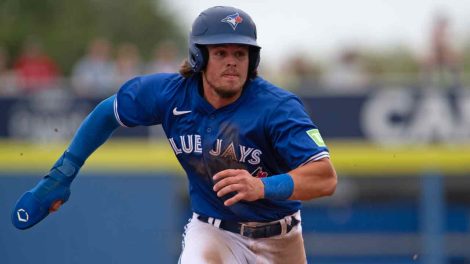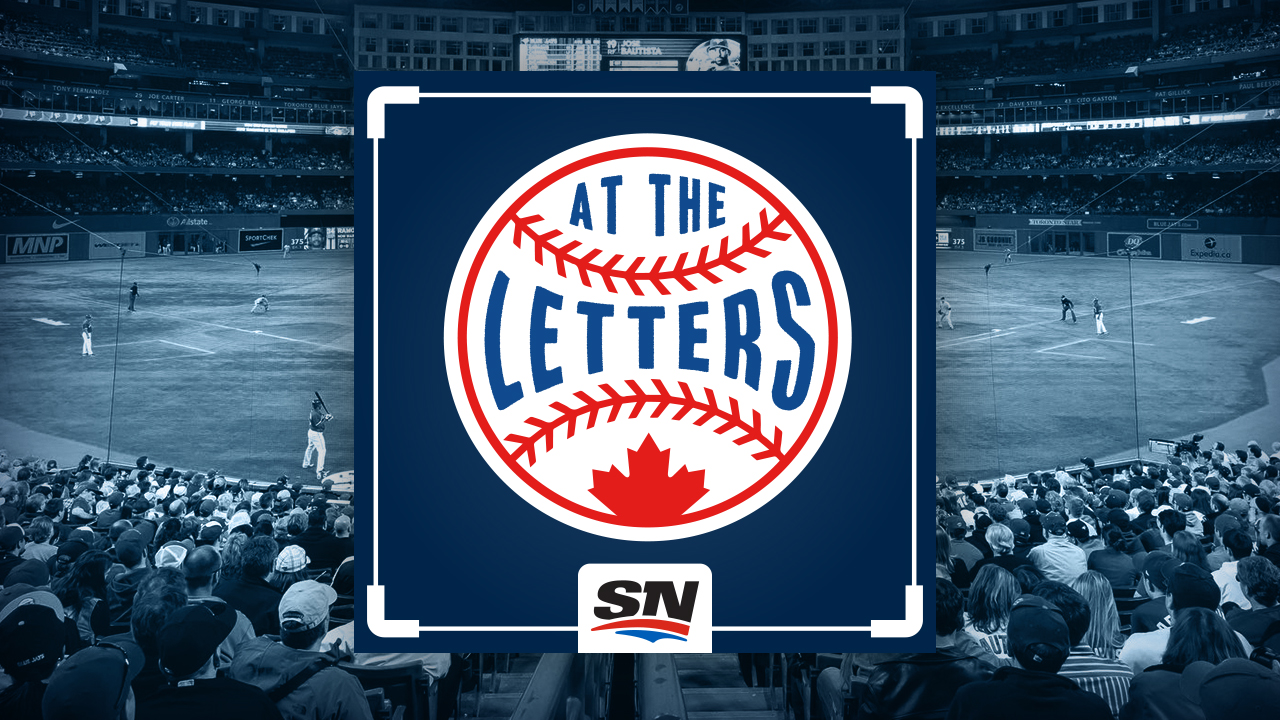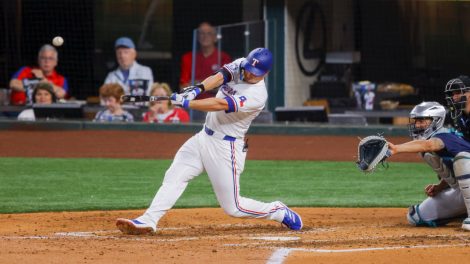TORONTO – An insightful glimpse into Troy Tulowitzki’s mentality as an athlete can be found in his thought process after he suffered the gruesome ankle injury that prematurely ended his season. As he rolled around the Rogers Centre turf July 28, unsure amid the excruciating pain where exactly the injury was but aware the damage was severe, he reverted to a mindset of "you’re good to go, or get off the field," but declined the assistance of a cart to do the latter.
"I wanted to be able to walk off the field," he says. "I think it’s important for me because it shows friends and family that it’s not as bad as it maybe looked. Truth is it was pretty bad, but that’s something I’ve learned in this game. It’s the right way to do it."
That determination, the sense of how things should be done, the gravitas with which he plays each and every game is important to keep in mind when discussing his future as the Toronto Blue Jays’ shortstop. Kicking the five-time all-star while he’s down has been in vogue since he tore the ligaments in his right ankle and suffered a compression fracture landing on the foot of Los Angeles Angels first baseman C.J. Cron while trying to beat out a grounder. Tulowitzki’s .678 OPS in 66 games made 2017 his worst season at the plate since a 25-game stint as a 21-year-old in 2006, and a hamstring injury suffered in late April seemed to limit his movement even after he returned. Rarely did he look like his elite self, at the plate or with his glove, prompting the hot-take set to declare him "done" and concoct absurd schemes to move him off shortstop.
Tulowitzki heard the criticisms and the doubts – the same ones that said he couldn’t stay at shortstop out of college because of his six-foot-three, 205-lb frame – and finds motivation in them. He’s coming back from this latest injury and he’s coming back as a shortstop, he insisted Wednesday during a visit with his teammates.
"I think you guys know how serious I am about that position and I’ll be the first one to say, ‘Hey, I’m not getting the job done,’ but I feel like I bring a lot to the table defensively," said Tulowitzki. "Sometimes what people read into are the metrics, the zone ratings, or whatever. But so much of shortstop is about being able to slow the game down for your teammates and your pitchers, taking charge in the infield. Some of those things go unnoticed and it’s not something you can keep a stat on. I take a lot of pride in that, trying to be really, really good at it. So I look forward to the challenge of people asking that question, or my age. Because one thing I’ve said since I stepped foot on a big-league field is that I’ll start this thing as a shortstop and I’ll finish it as a shortstop."

***
First things first, there’s the recovery from a third major injury, as Tulowitzki has already undergone significant surgeries on his left groin and hip during a remarkable 12-year career. On Tuesday he had a cast removed in favour of a walking boot, and a long and hard rehabilitation looms, although the expectation is that he will make a full recovery.
Despite that, questions will linger over the potential impact to his range and mobility until he steps back on the field next spring and lets his play answer them. He turns 33 on Oct. 10, and adjustments to counter for the natural decline caused by age are necessary for every shortstop, let alone one with his size and injury history.
"I don’t know if it’s so much about after this injury because if you look at me from when I first stepped into the league to now, I play shortstop a little bit differently, and I play it differently than a lot of people in this game," Tulowitzki explained. "I study the position and know what I want to get accomplished out there. That’s why I trust my ability in being able to come back.
"I don’t have to be the quickest guy because I know how efficient I am with taking routes, like an outfielder, and that’s all it is, taking angles to the baseball. And a lot of people don’t realize how important throwing accuracy is, and being able to do it from different arm angles. … People want to go on range factor. Well if you’re standing in a certain area where it’s constantly being hit, you really don’t have to move far. I don’t think people understand that, or the stats are there yet."

Playing shortstop is not only a preference for Tulowitzki, it’s his entire identity as a baseball player. After going undrafted out of high school, he worked relentlessly at Cal State University, Long Beach to make himself into the seventh overall pick in 2005. Cal Ripken Jr., and Derek Jeter are among his idols and he studied the way they and others played, looking to integrate things into his game.
"Not only have I studied these guys, I’ve talked to them," said Tulowitzki. "Some of them stayed (at shortstop) and some of them left, and every single one of them said they never would have switched positions. When they said that to me, I took it to heart and asked them why their thought was like that, and they all had really good answers to make me realize not only do I want to stay there, but I think it’s the right thing to do."
***
Every shortstop has his own style and brings a different set of mechanics to the position. Some, particularly younger ones, can rely on fast-twitch muscle movements to dart across the middle infield. Some rely on arm strength, others on quick feet.
Eventually, however, everyone must evolve or die, something Hall of Famer Barry Larkin did during a 19-year career as a shortstop that ended with 111 games at age 40. Five of his 12 all-star selections came from age 32 onwards.
"As a younger player, I had more lateral movement in my game. As an older player, I had more diagonal movement to create a better angle to first base," he said during a recent interview. "Whenever I work with an aging shortstop, this is what I tell them: ‘Listen, mine wasn’t pretty, but it was effective. So you can be pretty and make it look good, or you can be effective and play shortstop until you’re 40.’"
[relatedlinks]
Toward that end, in the latter part of his career Larkin stopped coming around on ground balls to position himself for a throw toward the base, and instead charged balls at an angle, fielding them on the backhand and throwing across his body. He’d charge balls more often to cut down on the length of his throws and compensate for a decline in arm strength. And Larkin spent so much time thinking the game.
"I felt like I was more fatigued at the end of the game because I put more mental energy into the game,” Larkin said
"The wear and tear is on the mental side, the preparation. Of course the knees weren’t as good, the arm wasn’t as good, the shoulder, the arm – everything got tired. But the thing is, can you still make the play at 35 that you made at 25? The answer, at 35, tends to be positive if you have a more cerebral approach, if you’re a little more in tune with what the pitcher is doing, reading the swing of the hitter, things like that."
When asked about Tulowitzki, the first thing Larkin said that impresses him is the way he’s able to play the position at his size. "He’s a big dude," he marvelled. "And he’s got great feet. Whenever I look at a shortstop, I look at his ability to get his feet underneath his body."
Larkin points to the consistency with which Tulowitzki fields the ball and the accuracy of his throws as reasons to believe he can continue to be an elite shortstop. "When you’re young you have the athleticism but you don’t have the knowledge and then you lose the athleticism and the knowledge base continues to grow," he said. "So it balances out."
[snippet id=3526033]
***
More than a month later, Tulowitzki can recall the play on which he was injured in vivid detail.
"I hit that ball up the middle and with the shift the guy was there and I could watch the ball coming to first," he recalled. "Cron’s foot might not have been in the best spot, he was kind of on top of the bag, I was watching the ball so it was the worst of both things, stepped on his foot, and since I was high, the bag was there as well and my ankle rolled further. I haven’t watched it since then – I haven’t wanted to. But I could tell from what people have told me that it was bad."
The video is ugly. After he clipped Cron, his foot turned inward and the impact with the base pushed it to 90 degrees. He collapsed in a heap, rolled around in obvious distress, reaching back for his heel.

The severity of the injury certainly turned the conversation about him, and his contract colours the discussion, too. Tulowitzki is due $20 million in each of the next two seasons, $14 million more in 2020 with a $15 million option or $4 million buyout for 2021.
The Blue Jays don’t have a shortstop knocking on the door yet, but top prospect Bo Bichette is coming fast and 2017 first-rounder Logan Warmoth has a chance to advance quickly. Richard Urena, whose progress stalled this year at double-A, is talented and could certainly re-emerge in the mix. Their progress will only amplify the calls for Tulowitzki to move elsewhere on the diamond.
"I hear some of those things, I know some of those things are out there – that’s what fuels me, that’s what makes this game so fun," he said. "People challenge you, you answer the challenge and when it’s all said and done, you appreciate those people who did that and you appreciate all the hard work you put in."









